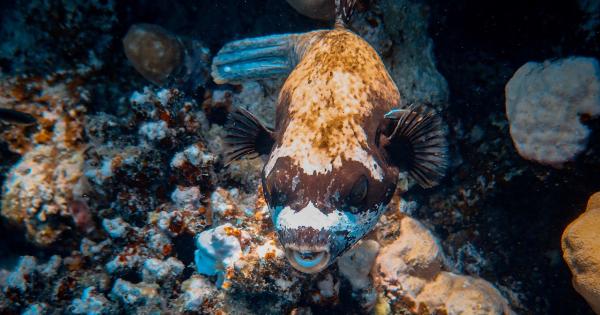There’s nothing quite like taking a refreshing plunge into the ocean waters, especially during the scorching summer months.
The feeling of cool waves crashing against your skin can be invigorating, but did you know that exposure to the sun and saltwater can lead to the development of unsightly brown spots on your chest and back? These spots, also known as hyperpigmentation, can be a result of excess melanin production triggered by UV radiation and other factors.
Understanding the Causes of Chest and Back Brown Spots
Before delving into preventive measures, it’s crucial to understand the potential causes of chest and back brown spots. By being aware of the triggers, you can take proactive steps to shield yourself from this skin concern.
1. UV Radiation: The sun emits harmful ultraviolet (UV) rays that penetrate the skin, stimulating melanocytes to produce more melanin. This excessive production can lead to the appearance of brown spots.
2. Saltwater: Although saltwater itself doesn’t directly cause brown spots, it can exacerbate the effects of UV radiation by reflecting and intensifying the sun’s rays.
3. Sun Damage: If your skin is repeatedly exposed to the sun without proper protection, it may result in cumulative sun damage over time. This can manifest as brown spots.
10 Ways to Protect Yourself from Chest and Back Brown Spots
Now that you’re aware of the causes, let’s explore ten effective ways to shield your skin from the development of chest and back brown spots after a dip in the ocean:.
1. Apply Sunscreen Liberally
The first and most crucial step in protecting yourself is to apply sunscreen before heading to the beach. Ensure you use a broad-spectrum sunscreen with a high SPF (sun protection factor) of at least 30.
Apply it generously on your chest and back, making sure to cover every exposed area. Reapply every two hours or more frequently if you’ve been swimming or sweating profusely.
2. Seek Shade
While enjoying your beach day, periodically seek shade under an umbrella or tree. This simple act can significantly reduce your skin’s exposure to harmful UV rays and mitigate the risk of developing brown spots.
3. Wear Protective Clothing
Opt for lightweight, long-sleeved shirts and pants made from UPF (Ultraviolet Protection Factor) fabric. These garments provide an additional layer of protection, shielding your skin from UV radiation.
4. Use a Wide-Brimmed Hat
Wear a wide-brimmed hat to protect your face, neck, and chest from direct sunlight. A hat with a brim of at least 4 inches is ideal, as it offers broader coverage and keeps harmful rays at bay.
5. Wear Sunglasses
Don’t forget to shield your eyes from the sun’s rays. Wear sunglasses with UV protection to protect the sensitive skin around your eyes and prevent squinting, which can lead to the appearance of crow’s feet and wrinkles.
6. Limit Sun Exposure
Avoid unnecessary sun exposure, especially during the peak hours of 10 am to 4 pm when the sun’s rays are strongest. Seek shade or engage in activities indoors during this time to reduce your risk of developing brown spots.
7. Rinse Off after Swimming
After a dip in the ocean, be sure to rinse off thoroughly with freshwater to remove saltwater and any residual sunscreen. Saltwater can further dehydrate your skin, making it more prone to irritation and pigmentation issues.
8. Moisturize Regularly
Keep your skin well-hydrated by applying a moisturizer after rinsing off. Choose a product that contains antioxidants and skin-soothing ingredients like aloe vera to nourish and protect your skin from potential damage.
9. Exfoliate Weekly
Exfoliation helps remove dead skin cells, promoting a more even skin tone and reducing the appearance of brown spots. Use a gentle scrub or exfoliating brush once a week to slough off dead skin and reveal a refreshed complexion.
10. Consider Skin Lightening Treatments
If you’re already dealing with chest and back brown spots, several skin-lightening treatments can help reduce their appearance.
Consult a dermatologist to discuss options such as topical creams, chemical peels, or laser therapy, which can effectively target hyperpigmentation.
Conclusion
By following these ten preventive measures, you can now enjoy your ocean dips without worrying about chest and back brown spots.
Remember to prioritize sun protection, stay hydrated, and take proactive steps to ensure your skin remains healthy and radiant.





























